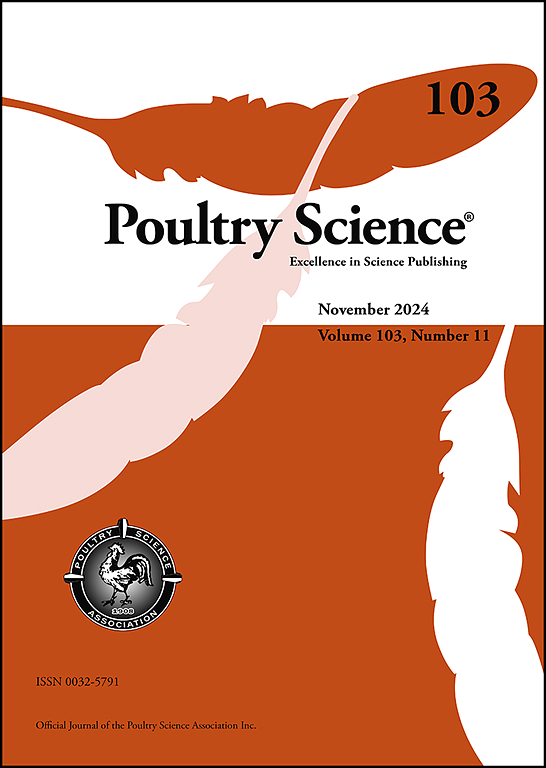Nutrient migration and lipidomics changes in the liquid inner core of alkali-pickled duck egg yolk
IF 3.8
1区 农林科学
Q1 AGRICULTURE, DAIRY & ANIMAL SCIENCE
引用次数: 0
Abstract
Preserved duck egg yolk (PEY) can be divided into a solidified outer layer (S-PEY) and a liquid inner core (L-PEY) during the middle-later stages of alkaline pickling. The differences among PEY, S-PEY, and L-PEY were systematically investigated using property characterization, nutrient determination, and lipidomics analysis. The results demonstrated that L-PEY exhibited a more vivid red-yellow color, with higher total protein, total lipid, and phosphorus contents compared to S-PEY. Conversely, the pH, moisture, and sodium contents were higher in S-PEY than in L-PEY. Quantitative lipidomics analysis revealed that L-PEY possessed a significantly higher total lipid abundance than PEY, with 19 lipid subclasses (551 lipid molecules) being notably more abundant in L-PEY. Phospholipids exhibited the most significant differential abundance, with the abundance of phosphatidylethanolamines (PE) and phosphatidylcholines (PC) in L-PEY being 19.6 and 13.6 times greater than those in S-PEY, respectively. These findings indicated that the alkaline pickling procedure resulted in substantial nutrient migration duck egg yolk, particularly in the case of phospholipids. The results provide novel insights into the processing mechanism of preserved duck egg yolk.

求助全文
约1分钟内获得全文
求助全文
来源期刊

Poultry Science
农林科学-奶制品与动物科学
CiteScore
7.60
自引率
15.90%
发文量
0
审稿时长
94 days
期刊介绍:
First self-published in 1921, Poultry Science is an internationally renowned monthly journal, known as the authoritative source for a broad range of poultry information and high-caliber research. The journal plays a pivotal role in the dissemination of preeminent poultry-related knowledge across all disciplines. As of January 2020, Poultry Science will become an Open Access journal with no subscription charges, meaning authors who publish here can make their research immediately, permanently, and freely accessible worldwide while retaining copyright to their work. Papers submitted for publication after October 1, 2019 will be published as Open Access papers.
An international journal, Poultry Science publishes original papers, research notes, symposium papers, and reviews of basic science as applied to poultry. This authoritative source of poultry information is consistently ranked by ISI Impact Factor as one of the top 10 agriculture, dairy and animal science journals to deliver high-caliber research. Currently it is the highest-ranked (by Impact Factor and Eigenfactor) journal dedicated to publishing poultry research. Subject areas include breeding, genetics, education, production, management, environment, health, behavior, welfare, immunology, molecular biology, metabolism, nutrition, physiology, reproduction, processing, and products.
 求助内容:
求助内容: 应助结果提醒方式:
应助结果提醒方式:


